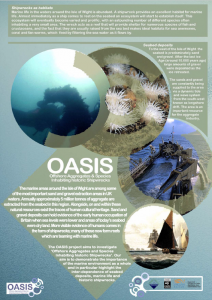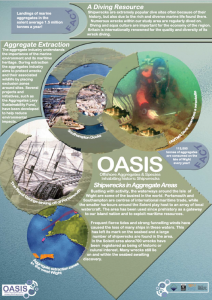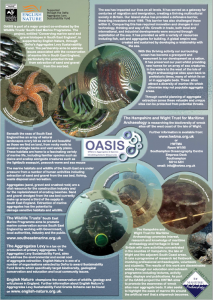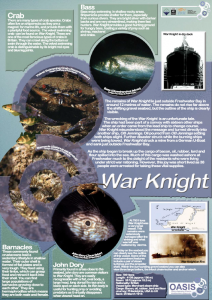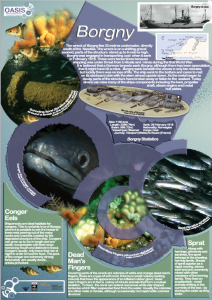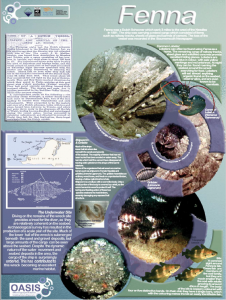The Offshore Aggregates and Species Inhabiting historic Shipwrecks (OASIS) project aimed to demonstrate the importance of the marine environment as a whole, highlighting the interdependence of seabed deposits, sea life and historic shipwrecks. The project was funded by The Wildlife Trusts South East Marine Programme and Natural England (then English Nature) through DEFRA’s Aggregate Levy Sustainability Fund.
The marine areas around the Isle of Wight are among the most important sand and gravel extraction areas in UK waters. The reason for this is twofold. Firstly, large amounts of gravel were deposited in this area at the end of the last Ice Age as the ice retreated (around 15,000 years ago). Secondly, new deposits of sand and gravel are constantly supplied to the area via a dynamic tide and wave system from the south-west known as longshore drift. Throughout these natural sediments, there exist traces of cultural heritage, both in the form of shipwrecks and evidence of early human occupation.
A shipwreck provides an excellent habitat for marine life. Almost immediately a ship comes to rest on the seabed an ecosystem will start to establish itself. This ecosystem will eventually become varied and prolific, with an astounding number of different species often inhabiting a very small area. The wreck acts as a reef that will provide shelter for numerous species of fish and crustaceans, and the fact that they are usually raised from the sea bed makes ideal habitats for sea anemones, coral and fan worms, which feed by filtering the sea water as it flows by.
The OASIS project focused on wreck sites in the West Wight area including the Fenna, Borgny, and War Knight. Diving took place on these artificial habitats to record the marine life living on them. The information was used for the Marine Week event held at Fort Victoria in 2005 and displayed at the Sunken Secrets centre throughout 2009.
We currently have an updated sealife and shipwreck habitates education box for sale. Click here for more information.
Shipworm and Gribble
Much of the ship’s lower hull structure lies beneath the sands and gravels of the seabed. The majority of timber that has not been buried has been eroded or eaten away. The barrels which held the cement have disappeared leaving solid cylinders in the shape of the barrel interiors.
Some of the organisms that eat wood are marine borers such as shipworm (Teredo Navalis) and gribble (Limnoria Lignorum). The gribble resembles an ordinary woodlouse, and feeds on unprotected timber, leaving a hollow cylindrical borehole. Shipworm is a mollusc with a worm-like body. Only a small portion of the body is covered by shell, so the worm bores into wood to protect itself. The boring and feeding action of these two species weakens the host timbers, severely damaging any exposed hull structure.
Fish & Lobster
A common sight around Fenna is bib. These fish are members of the cod family, but are much smaller than the cod we are accustomed to, with adults growing to around 40cm in length. The body of the bib is coppery coloured with four or five distinctive bands and on their chin they have a single barb, which makes the bib an easily identifiable fish.
Lobsters also can often be found using Fenna as a home. The remaining cargo of railway tracks, sheet glass and solidified concrete provide excellent hiding places for them. Lobsters are dark blue in colour, with pale yellow markings and red antennae. At night they can be found roaming the seabed around the wreck searching for food. Lobsters will eat almost anything organic found on the seabed, dead or alive, and are even known to be cannibals.

